Line and Rigging
Mechanical Advantage with Low Friction Rings
By Allen Edwards
Using Low Friction Rings instead of Blocks
I recently saw a picture of a three stage cascaded block system using low friction ring instead of blocks. This article analyzes such a cascade and shows how to calculate its effective mechanical advantage. The techniques shown can easily be extended to other systems. I will discuss one such system that I use on my boat.Mechanical Advantage
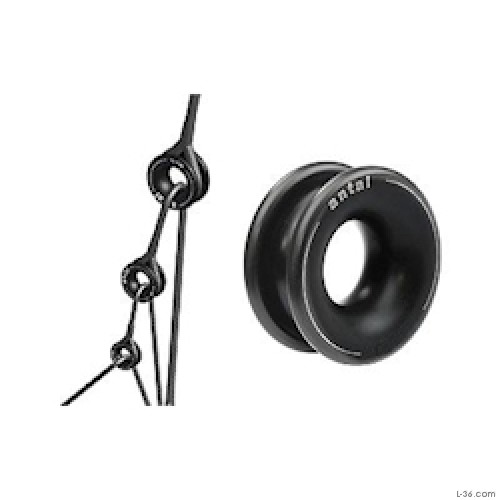
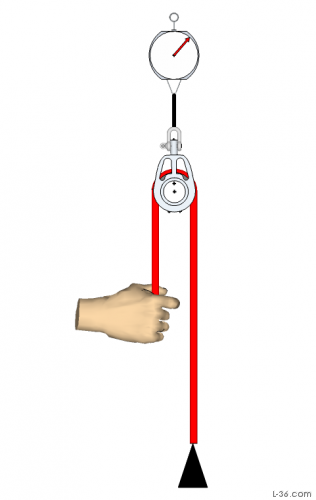
But there is friction in the low friction rings as they are low friction, not no friction. To determine the amount of friction I did the following experiment with a number of different sized rings.
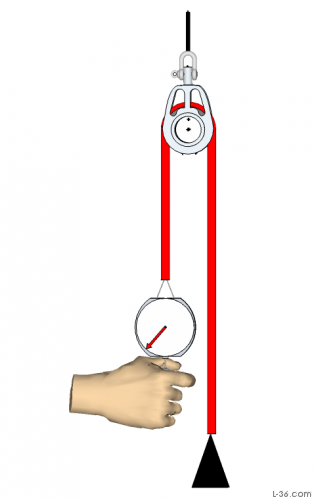
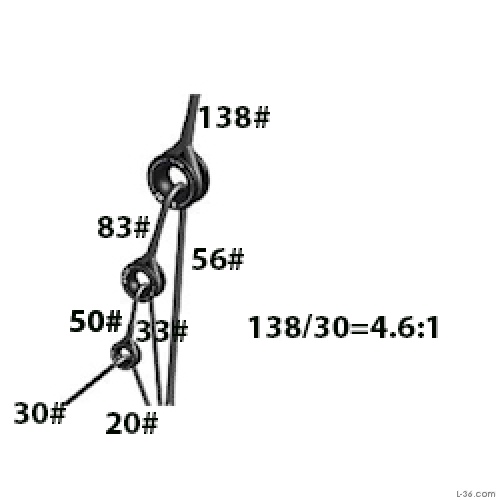
Analysis of 3 Stage Low Friction Ring Cascade
Let us consider the mechanical advantage for the block system in the second picture of this article but analyze it for the low friction ring case. We will pull with 30 pounds but due to friction we only pull on the deck with 20 pounds. The scale will read 50 pounds, the sum of these two numbers. Thus, the mechanical advantage of this system is 50 divided by our 30 pound pull or 1.66 : 1 rather than the 2 : 1 we had when using no friction blocks.The compound system in the first picture of this article simply cascades three of these systems. This would be 2 x 2 x 2 = 8 : 1 if we had no friction blocks but with the low friction blocks it is 1.66 x 1.66 x 1.66 = 4.6 : 1. This is better than using two no friction blocks and actually pretty good, but not as much as what you would get with no friction blocks.
1:1 setup eliminates blocks
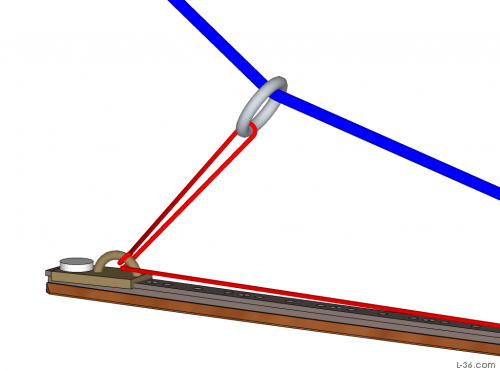
The alternative is a single block on the rail and a fixed ring that the sheet goes through. That standard setup would obviously be 1 : 1. Let's analyze the low friction alternative. We have two turns around more or less low friction rings. One is 180 degrees at the sheet and the other is closer to 90 degrees through the rail car. There is less friction going around 90 degrees than around 180 by a small amount. with the 1 inch ring, only 26 pounds was required for a 90 degree bend rather than 30. But a small radius such as we have on the rail car requires as much force in 90 degrees as the larger ring needs for the full 180 so I will just say these two parts are equivalent and have our 1.5 loss factor. Back to our analysis. Assume that the line pulling on the rail car but fixed to is is our 20 pound point. That means that the other part of that line has 30 pounds on it and that the part going back to the cockpit has 1.5 x 30 or 45 pounds. Let me note here that these numbers are only the case when we are pulling in on the control line while trying to bring the twing down. In the steady state, all the forces are likely to equalize but what we care about is how much force does it take to move the ring. The twing is pulling 50 pounds so the mechanical advantage is 50 / 45 or just over 1.1:1. This is about the same as using a no friction block but we didn't need the block and got a bit more advantage. It is a good alternative to using a single block on the rail and a fixed attachment to the twing ring.
Raw Data
| Ring (most tests using Amsteel line) force to move 20 pound load |
90 deg bend | 180 deg bend |
| small carabiner (not smooth) | 34 | |
| Smooth ring (.43dia) | 28 | |
| Locking Caribener (smooth .47dia) | 28 | 31 |
| Sheifer Block (not ball bearning) | 21 | |
| Small Garhauer Block | 20 | |
| Brown Climing Ring (not round cross section) | 30 | |
| 1" dia round | 26 | 30 |
| Medium Carabiner | 29 | 32 |
| Cocking Caribiner and 7/16 StaSet | 42 | 48 |
NOTICE: Some pages have affiliate links to Amazon. As an Amazon Associate, I earn from qualifying purchases. Please read website Cookie, Privacy, and Disclamers by clicking HERE. To contact me click HERE. For my YouTube page click HERE